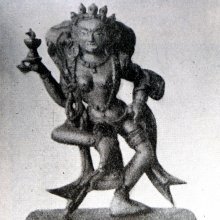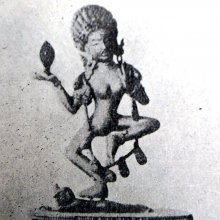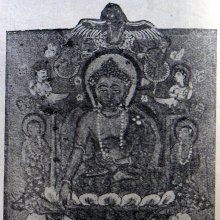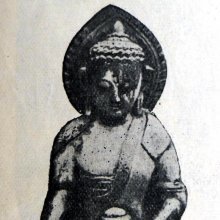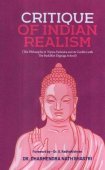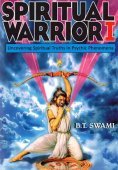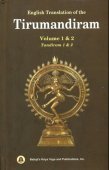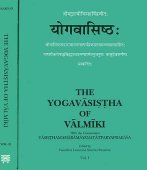Recognition: 2 definitions
Introduction:
Recognition means something in Buddhism, Pali, Hinduism, Sanskrit. If you want to know the exact meaning, history, etymology or English translation of this term then check out the descriptions on this page. Add your comment or reference to a book if you want to contribute to this summary article.
Images (photo gallery)
(+18 more images available)
In Hinduism
Shaiva philosophy
Source: Google Books: The Recognition SutrasRecognition (of oneself as an expression of universal Consciousness) is denoted by the Sanskrit term Pratyabhijñā and forms the basis for Kṣemarāja’s “Recognition philosophy”.—The Pratyabhijñā-hṛdaya is a short book written in Sanskrit 1,000 years ago in the Valley of Kashmir.—The author, Rājānaka Kṣemarāja, called it Pratyabhijñā-hṛdaya, which means ‘the Essence of the Recognition philosophy’ or ‘the Heart of the teachings on Recognition’—recognition, that is, of oneself and all beings as expression of the singular, universal, divine Consciousness. The Recognition philosophy is the most fully developed body of teachings in non-dual Śaiva Tantra. It arose in Kashmīr in the early 900s and eventually spread through the whole Indian subcontinent, being especially well studied in the far south as well as the far north.
-
In Buddhism
Tibetan Buddhism (Vajrayana or tantric Buddhism)
Source: Google Books: The Crystal Mirror of Philosophical SystemsRecognition (of one’s transgression) refers to one of the the “Four Opponent Powers” (i.e., “preliminary practices for tantra”) which are known in Tibetan as stobs bzhi.—Accordingly, [while describing the history and biography of the great Jé Tsongkhapa], [regarding the textual systems he studied]: [...] Umapa went on to eastern Tibet, and when Jé Lama reached the age of thirty-six, nine men — the master and eight disciples — went to Ölkha Chölung for intensive practice. Immediately upon arrival, considering it vital, all of them, master and disciple alike, first worked hard at the confession practice that includes all Four Opponent Powers [e.g., recognition of one’s transgression]. Jé himself performed confession of downfalls accompanied by prostrations, to the point where the skin of his fingers and toes cracked, and imprints of his hands, feet, and head appeared in the stone floor. [...]

Tibetan Buddhism includes schools such as Nyingma, Kadampa, Kagyu and Gelug. Their primary canon of literature is divided in two broad categories: The Kangyur, which consists of Buddha’s words, and the Tengyur, which includes commentaries from various sources. Esotericism and tantra techniques (vajrayāna) are collected indepently.
See also (Relevant definitions)
Query error!
Full-text (+279): Pratyabhijna, Samvitti, Pratyabhijnana, Abhijnana, Anupalabdhi, Samjna, Sapratyabhijnam, Vijanana, Sabhijnana, Parijnapti, Amanya, Sanjanana, Prativijnapti, Anubodha, Abhijnanashakuntalam, Abhijanana, Kampita, Sambandhana, Manyata, Abhijnanika.
Relevant text
Search found 310 books and stories containing Recognition; (plurals include: Recognitions). You can also click to the full overview containing English textual excerpts. Below are direct links for the most relevant articles:
Padarthadharmasamgraha and Nyayakandali (by Ganganatha Jha)
Text 156: On Viśeṣa < [Chapter 8 - On Viśeṣa]
Text 116 < [Chapter 6a - On Qualities]
Text 2: Source of Knowledge < [Chapter 1 - Introduction]
Journal of Ayurveda and Integrative Medicine
Recognizing Ayurveda journals: Who will bell the cat? < [Volume 10 (issue 2), Apr-Jun 2019]
Salutary Path for Progress < [Volume 5 (issue 1), Jan-Mar 2014]
Vaidyamadham Cheriya Narayanan Namboodiri < [Volume 1 (issue 2), Apr-Jun 2010]
The validity of Anumana (inference) in Nyaya system (by Babu C. D)
Chapter 3.4 - Jaina views on Inference
Chapter 2.8 - Pramanas in Jaina Philosophy
Our Value System and The Future of India < [January – March, 2007]
Sir C. P. Ramaswami Aiyar < [May-June 1931]
The Hindu Ideal of Devotion < [April 1949]
Tattvasangraha [with commentary] (by Ganganatha Jha)
Verse 2476-2478 < [Chapter 24b - Arguments against the reliability of the Veda (the Revealed Word)]
Verse 452-453 < [Chapter 8 - Examination of the Doctrine of the Permanence of Things]
Verse 228 < [Chapter 7 - Doctrine of the Self (ātman, ‘soul’)]
The Sarva-Darsana-Samgraha (by E. B. Cowell)
Related products
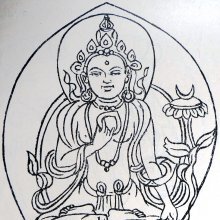
.jpg)
